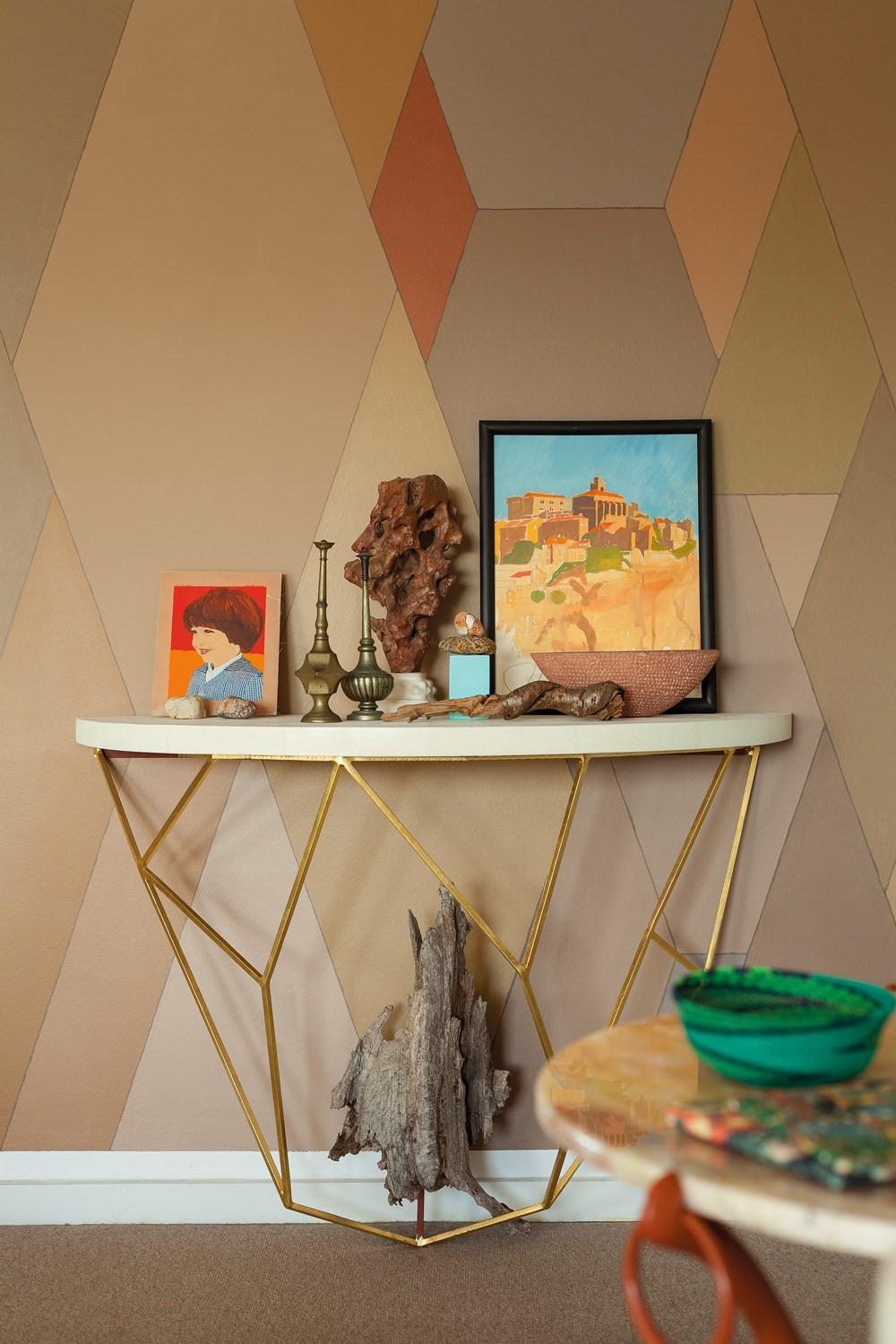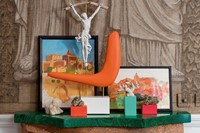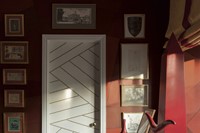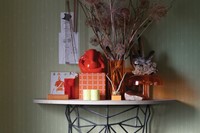“Lord Byron lived in the main house for 18 months, but not very happily,” explains interior and furniture designer Ashley Hicks, as he begins a grand tour of his home at the Albany. “He had a love affair with Lady Caroline, who was slightly unhinged, and when Byron dumped her she sent him all her pubic hair attached to a note. Unfortunately she was a bit savage with the scissors and there was a clump of bleeding flesh also attached.”
Hicks’ apartment, or ‘set’, as they’re known in this 18th century complex in the heart of Piccadilly, is as colourful and detailed as his Byron anecdote. The former residence of his late father David Hicks – the decorating colossus who, during the 60s and 70s, injected a rigorous mix of bold colours, trippy patterns and abstract art into British high society – Hicks Jr moved in two and half years ago and got straight to work. The first six weeks were spent painting the living and bedroom’s hessian walls in an elaborate mural depicting Byzantine views, Ancient Greek muses and his beloved chickens from his Oxfordshire home (“the fox got them all eventually!”). Today, complete with a giant blue obelisk, pink faux mosaic console and floor-to-ceiling resin totem sculpture – all products of Hicks’ self-proclaimed “DIY mania” – the space is a brilliant riot of personal touches and bold statements.
Little wonder it plays a recurring role in Hicks’ latest reference bible Details, published by IDEA Books. Inspired by the composed iPhone shots of tablescapes, ancient treasures and hallowed halls he posts on his Instagram account, Details offers a micro point-of-view on opulence and atmosphere, making no distinction between an off-limits room at the Sir John Soane’s Museum and a corner of Hicks’ old South Kensington flat. “There is no real structure to the book,” he says. “It’s put together in the same way I make playlists of music. I like random; I like jumping from one thing to another that aren’t related because then you make surprising mental connections. Imposing a theme can be rather limiting.”
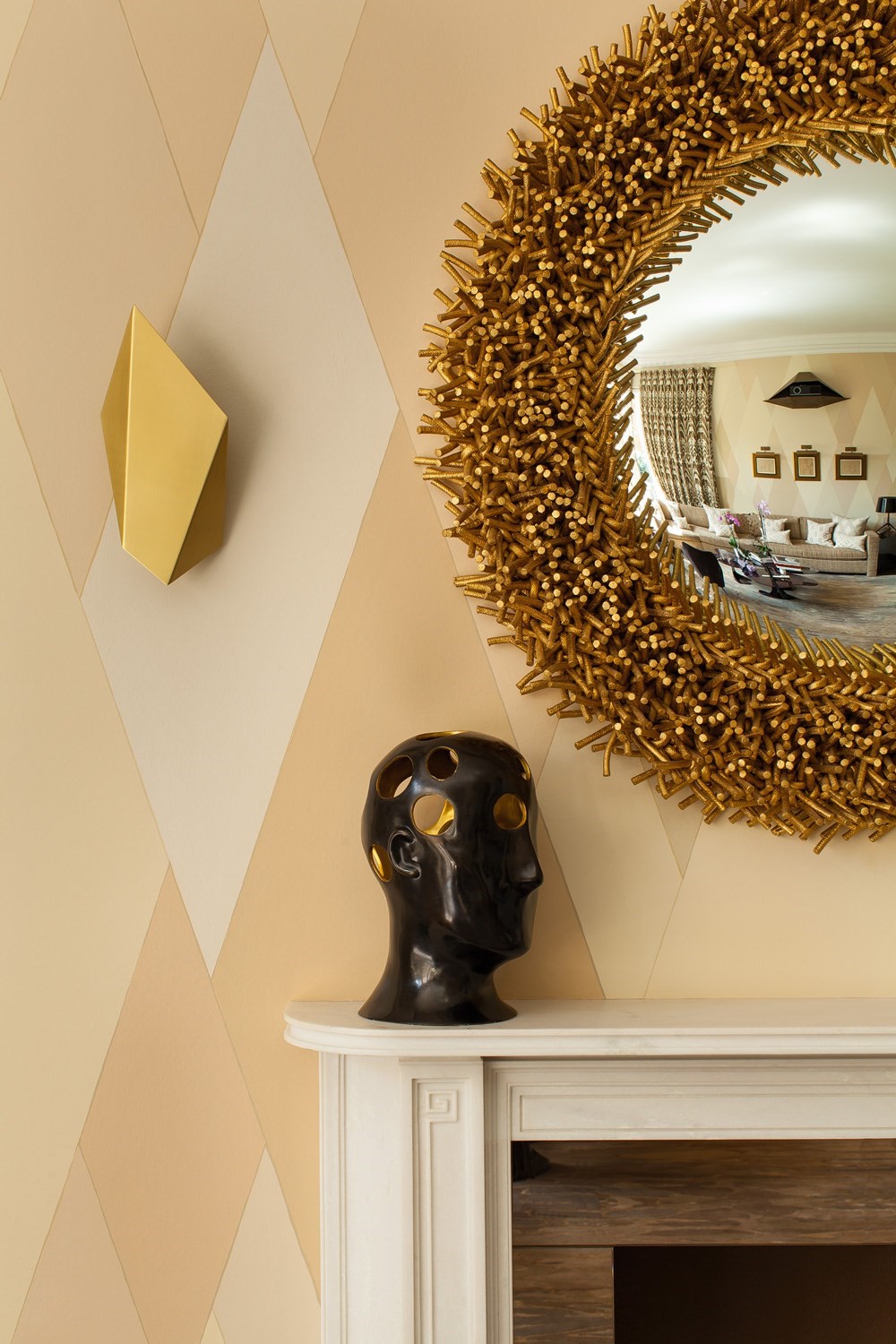
How does he describe his own design style? “My wife says it’s maximalist,” he winces. “I think that’s the most irritatingly overused word, don’t you?” “You’re a monster,” shouts Katalina from the galley kitchen, popping a bottle of champagne; above her, in large gilt letters, is the French phrase ‘C’est pas Versailles’. “Did you show him my garbage room yet?” Chuckling, Hicks dutifully leads the way through the bedroom-cum-study, past a futurist lacquered desk (more Hicks handiwork) and an 1820s French Empire chair (“the only antique I’ve bought in the last 15 years”), and into a small dressing room. We step over some of Katalina’s discarded wardrobe for a closer look at a gallery of pop art portraits of the King of Tonga, a young Ashley, Queen Elizabeth and Prince Philip (a cousin of Hicks’ mother Lady Pamela): “These are dad’s artworks from the 60s when, for a brief moment, he thought he was going to be the Andy Warhol of London.” Hung on walls covered in foil geometric paper (another David Hicks reissued design) the effect is an unexpected burst of Clockwork Orange post-modernism.
“My wife says it’s maximalist... I think that’s the most irritatingly overused word, don’t you?” – Ashley Hicks
Returning to the living room, he points out the only other remaining pieces by his father: two summery watercolours of the French village Gordes, nestled on a faux malachite console amongst a collection of foam carved rocks, a small gnome and a Nymphenburg porcelain statue of Jesus on the cross. It’s a typically eclectic assortment of objects, just like Hick’s list of inspirations: the neoclassical architecture of Soane’s master Henry Holland (a favourite is Holland’s Brook’s club in St James’s Street); Tony Duquette’s wild Hollywood interiors; and ‘Yul Ulu’, the fictional designer from the 1958 movie Auntie Mame.
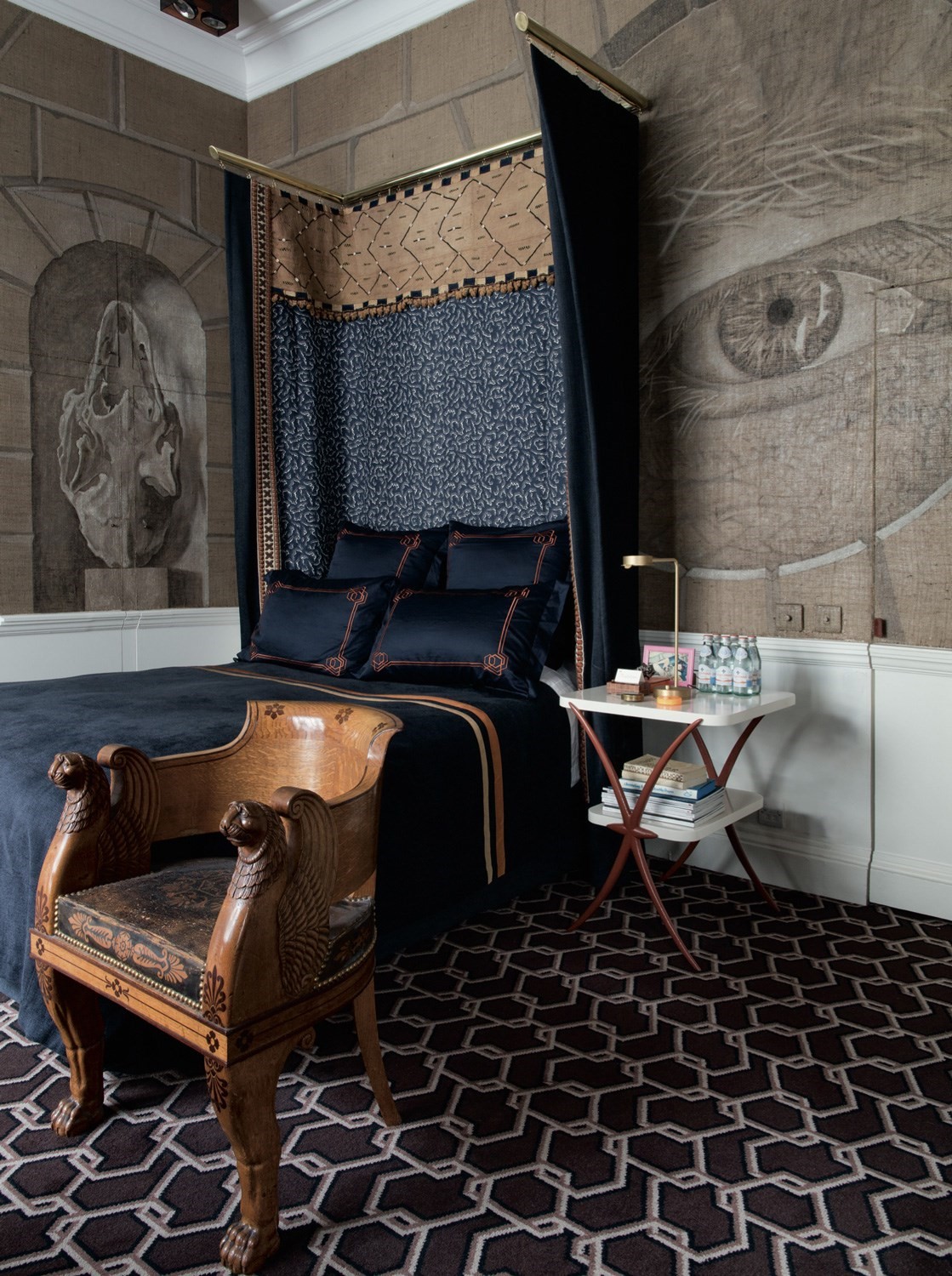
Now the Albany set is finally finished, what’s next? “Well, I don’t find something is ever really finished,” he says. “It’s nice to keep changing things, I’m constantly rearranging. But there are more orders for my small polymaclay totem sculptures...” The last batch, all baked in his kitchen oven in the country, have already been sold and shipped to clients in the U.S. And this summer there’s the small matter of redecorating his father’s 60th birthday pavilion.
“I had the walls plastered last year in preparation. I’m going to paint it as an ironic tribute to him, its going to have pink faux mosaic walls then inset terracotta reliefs which look, at a glance, like classical reliefs but are actually images of things like ‘David Hicks taking delivery of his Rolls Royce’ or ‘David Hicks opening his shop in Johannesburg’… moments from his life. I think he’d find it funny; he liked eccentric things.”
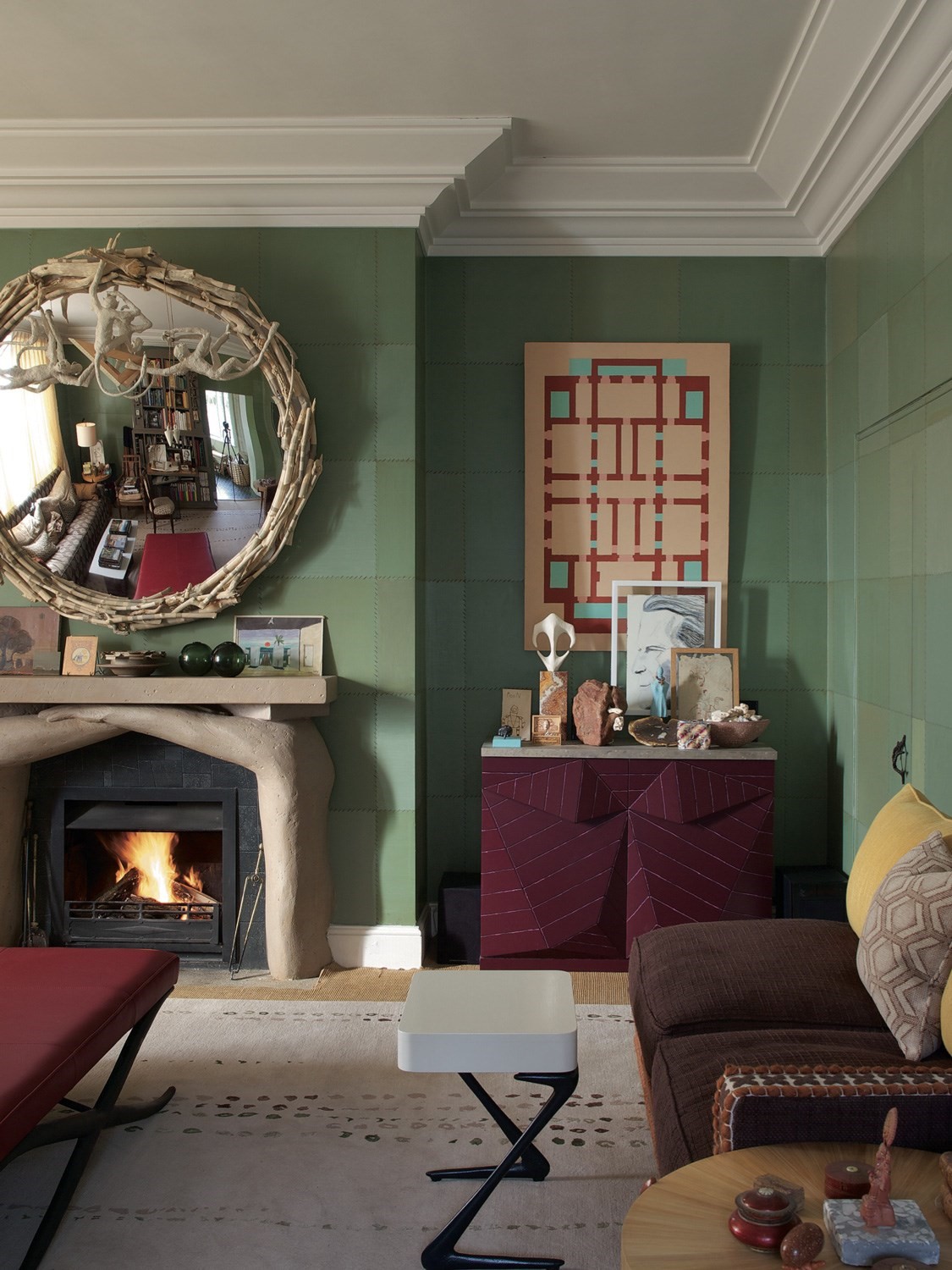
Details by Ashley Hicks is availiable to purchase at IDEA Books from today.
